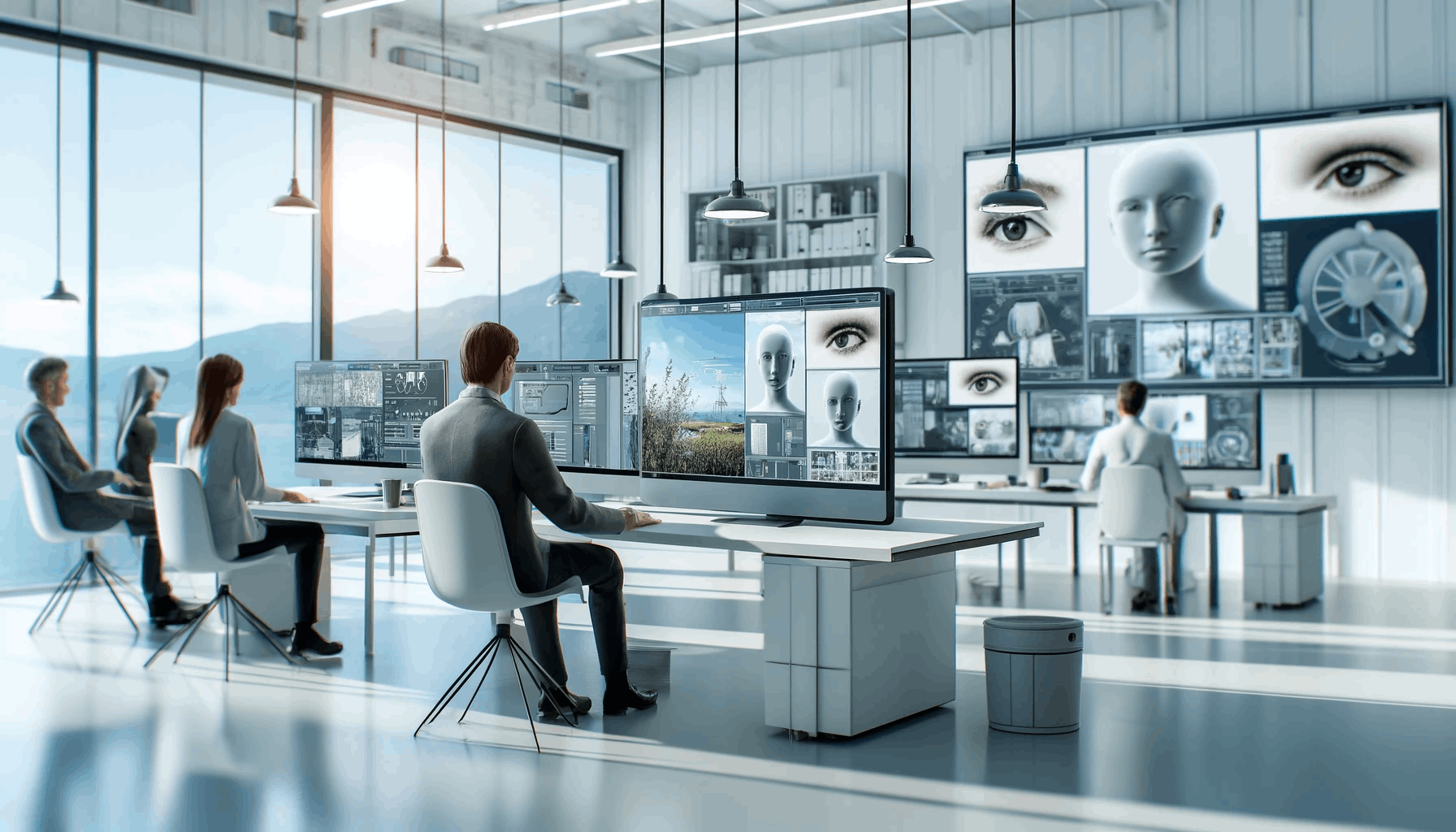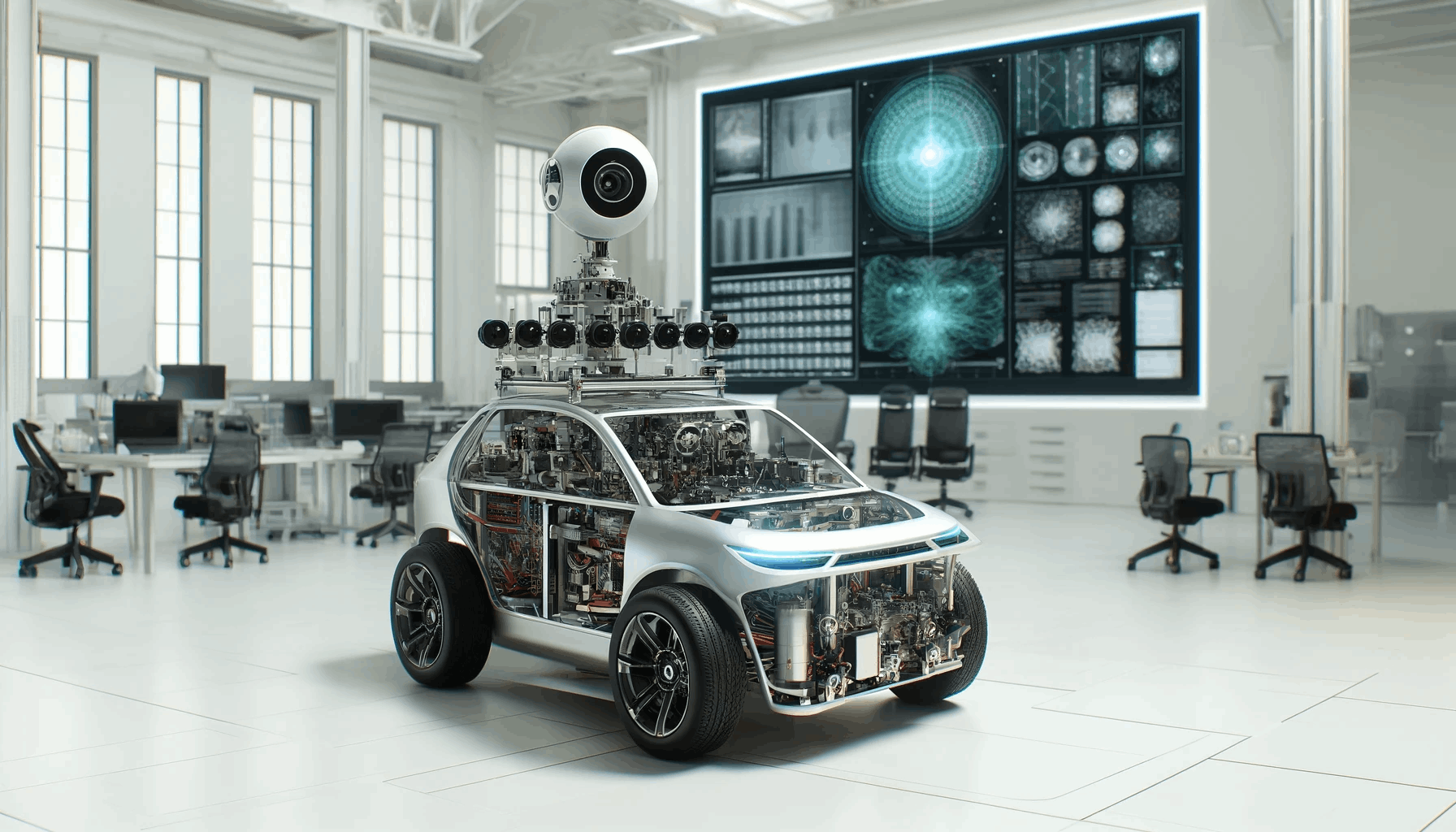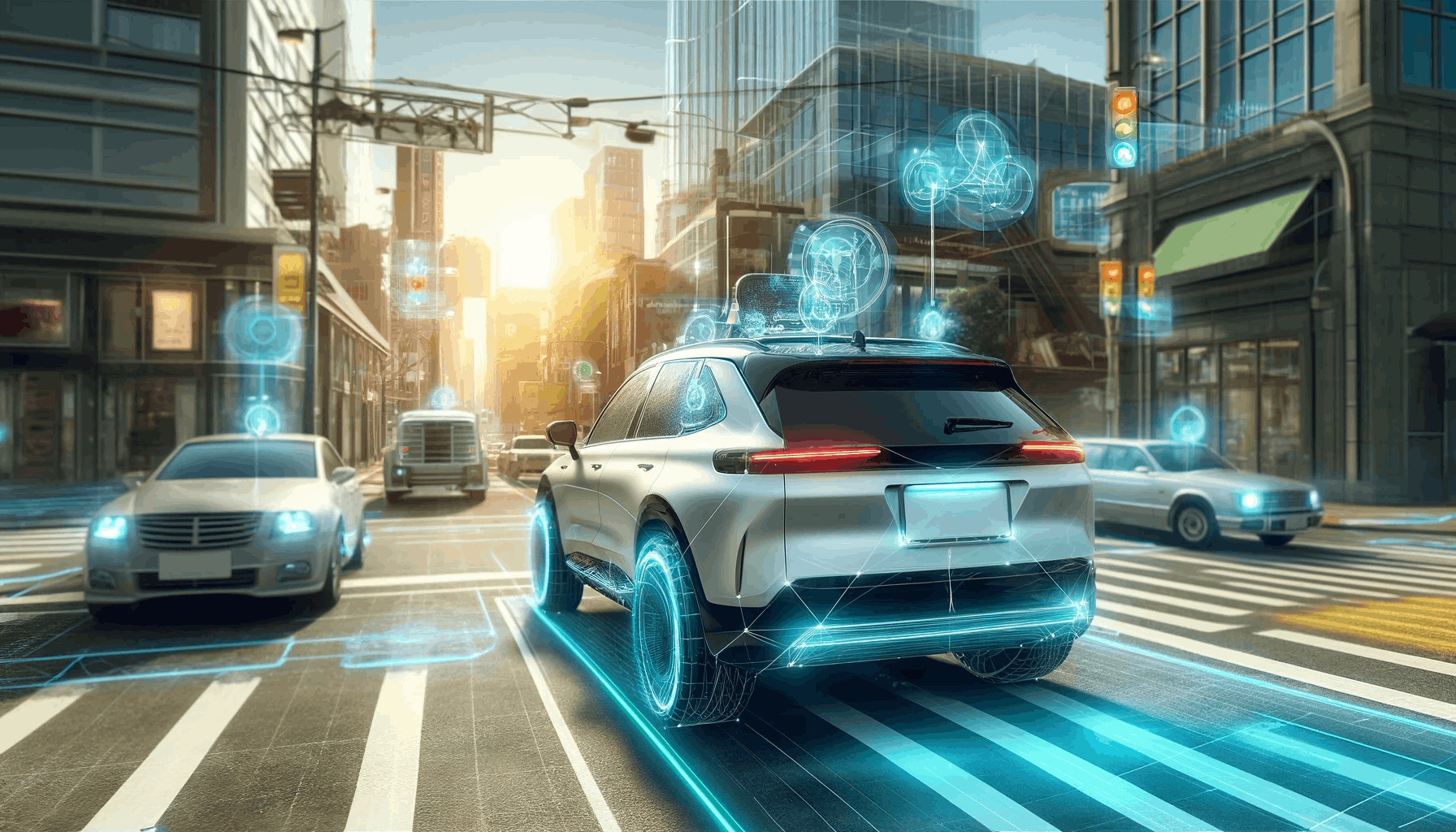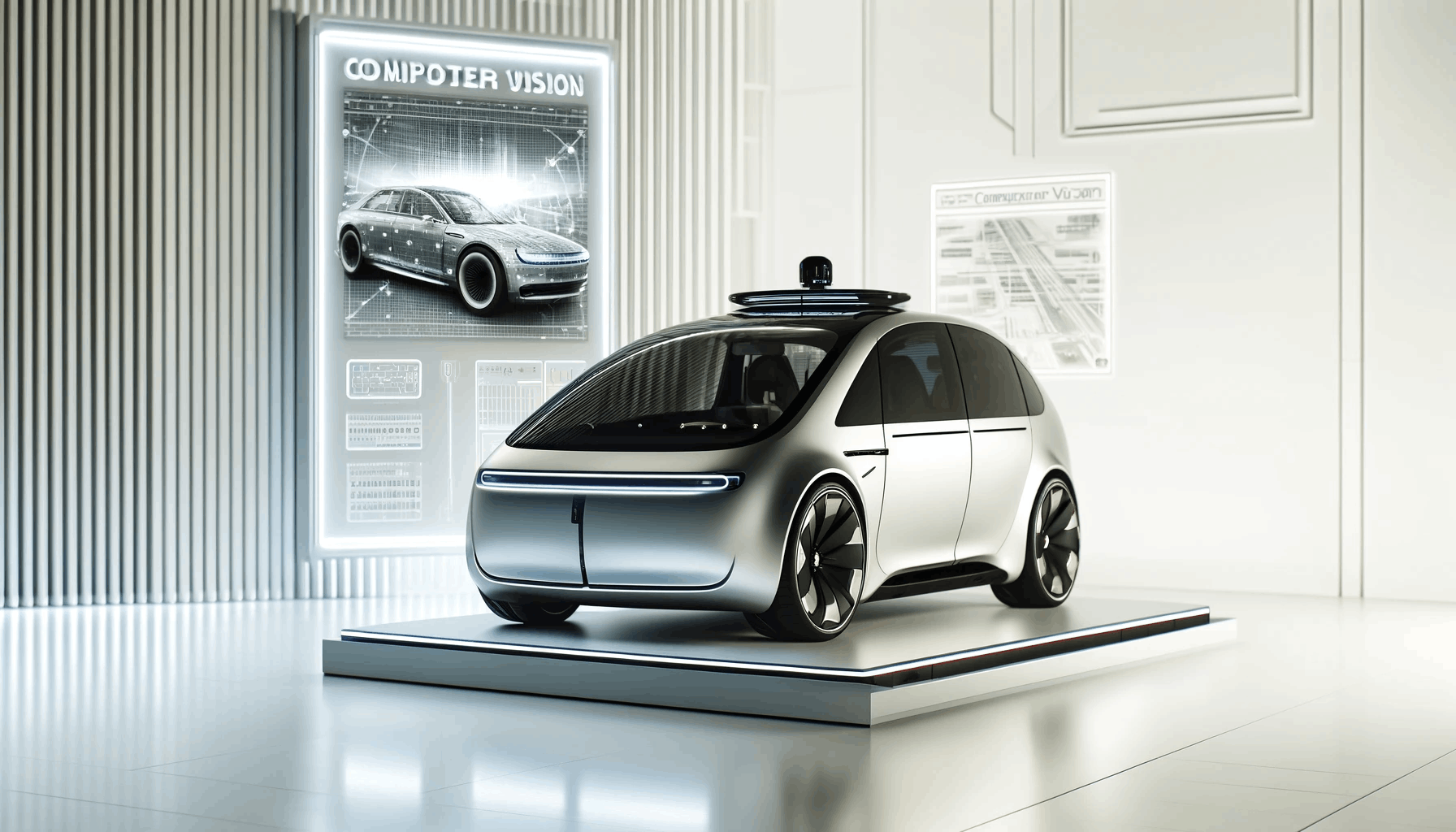Explore the potential of computer vision in revolutionizing autonomous vehicles and driving efficiency.
Driving Efficiency: Computer Vision for Autonomous Vehicles
It’s not just Tesla: Google (Waymo), General Motors (Cruise), Apple, and many others have sent their pilot versions of autopilot taxis to the streets. Yet, the deployment process doesn’t run without friction: recently, the city of Austin, Texas, asked the autonomous taxi company Cruise to ground their vehicles for Halloween, the Los Angeles city officials opposed letting Google’s subsidiary Waymo into their city. The reasons for that were the concerns about the safety of driverless vehicles and the lack of oversight on how they work.
The discussed efficiency of driverless cars and other technologies greatly depends on the developments in computer vision. In this article, we’ll explain the computer vision essentials, key components of computer vision technology, as well as challenges and solutions in the development and application of computer vision for autonomous vehicles.
Let’s get started!
Understanding Computer Vision
Computer vision is the technology that allows machines “see” the surrounding environment. It is a subfield of artificial intelligence that deals with object detection and recognition.
At its core, computer vision involves the extraction, analysis, and interpretation of meaningful information from digital images or videos. This information can include object detection, segmentation, recognition, and tracking. By effectively analyzing visual data, computer vision algorithms provide valuable insights and enable machines to interact with the physical world.
The Concept of Computer Vision
Computer vision aims to mimic the visual capabilities of humans by using algorithms and mathematical models.
It involves processing and analyzing vast amounts of visual data to extract valuable information and understand the context of a given scene. From detecting objects to recognizing facial expressions, computer vision enables machines to interpret visual stimuli and respond accordingly.

Role of Computer Vision in Autonomous Vehicles
For unmanned vehicles, computer vision is the same as eyes to a human. Actually, “eye” are represented by sensors and cameras, while the brain activity of image recognition is represented with advanced algorithms. Ii allows driverless cars to make informed decisions, navigate through complex traffic scenarios, and anticipate potential hazards.

One of the key challenges in computer vision is developing algorithms that can accurately detect and identify objects in various environments and lighting conditions. For example, an autonomous vehicle must be able to differentiate between a pedestrian and a lamppost, even in low light or adverse weather conditions.
Traditional machine learning algorithms depended on a large amount of labeled data and could not provide this level of effectiveness. Not all scenarios in the world may be included in training data, which is why some autopiloted cars had trouble detecting kids dressed in Halloween suits. Moreover, according to Business Insider, some driverless cars struggle to recognize people of color on the streets.
To improve, computer vision algorithms are now trained using sophisticated techniques such as deep learning and convolutional neural networks, which can learn to recognize patterns and features in images.
Another fascinating application of computer vision is in the field of healthcare. Medical professionals can use computer vision algorithms to analyze medical images, such as X-rays or MRIs, and assist in diagnosing diseases or abnormalities. By automatically detecting and highlighting potential areas of concern, computer vision can help doctors make more accurate and timely diagnoses, ultimately improving patient outcomes.
Want to learn more about computer vision and object recognition technology?
Read this: “Optimizing Object Detection AI Models for Efficiency”
The Intersection of Computer Vision and Driving Efficiency
Computer vision has the potential to vastly improve driving efficiency by enhancing navigation and minimizing errors and accidents.

As technology continues to advance, the integration of computer vision in vehicles is revolutionizing transportation.
Enhancing Navigation with Computer Vision
Computer vision enables autonomous cars to identify and interpret road signs, traffic lights, lane markings, and other objects of the real world. This, actually, lets them navigate through different driving conditions, including situations like bad weather or low light.
Additionally, computer vision algorithms can detect and analyze the behavior of other vehicles, pedestrians, and cyclists, allowing autopiloted cars to react to potential hazards.
Moreover, the real-time data captured by these systems not only aids in navigation but also contributes to creating detailed maps that can be utilized for urban planning and infrastructure development.
Reducing Errors and Accidents
One of the primary goals of autonomous vehicles is to reduce human error, a leading cause of accidents on the road. Computer vision technology can play a crucial role in achieving this objective. By continuously monitoring the environment, identifying potential dangers, and responding swiftly, autonomous vehicles can significantly reduce the occurrence of accidents caused by human negligence or inattention.
Furthermore, the application of computer vision goes beyond just the realm of autonomous driving. It is also being used in driver-assist systems to provide real-time alerts to human drivers, helping them stay vigilant and avoid collisions. This seamless integration of technology aims to create a safer and more efficient driving experience for all road users.
Key Components of Computer Vision in Autonomous Vehicles
Autonomous vehicles rely on various key components of computer vision to perceive and understand their surroundings.
Computer vision in autonomous vehicles goes beyond just image recognition and processing. It involves a complex network of sensors, including LiDAR and radar, that work together to provide a comprehensive view of the vehicle’s environment. LiDAR, for example, uses laser beams to create detailed 3D maps of the surroundings, while radar helps detect objects even in challenging weather conditions.
Image Recognition and Processing
Image recognition and processing are fundamental aspects of computer vision. By analyzing digital images captured by onboard cameras, autonomous vehicles can identify and classify objects, read road signs, and understand traffic conditions. Advanced image processing techniques, such as edge detection and image segmentation, further enhance the accuracy and reliability of these recognition systems.
Moreover, image recognition in autonomous vehicles extends to detecting subtle visual cues, such as hand gestures from pedestrians or turn signals from other vehicles. This level of detail allows autonomous vehicles to not only navigate safely but also interact seamlessly with human drivers and pedestrians on the road.
Machine Learning and Artificial Intelligence
Machine learning and artificial intelligence algorithms are integral to the success of computer vision in autonomous vehicles. By training models on large datasets, these algorithms can learn to recognize patterns and make predictions, enabling autonomous vehicles to anticipate and react to various traffic scenarios. Through continuous learning and improvement, machine learning algorithms enhance the overall driving efficiency of autonomous vehicles.
Furthermore, the integration of machine learning and artificial intelligence in computer vision enables autonomous vehicles to adapt to dynamic environments. These technologies empower vehicles to learn from real-time data and adjust their behavior accordingly, ensuring safe and efficient navigation in diverse driving conditions.
Challenges and Solutions in Implementing Computer Vision
While computer vision has shown great potential in enhancing the efficiency of autonomous vehicles, several challenges need to be overcome for its successful implementation.
One of the key challenges in implementing computer vision for autonomous vehicles is the need to deal with diverse driving conditions. Autonomous vehicles must operate under a wide range of scenarios, including diverse weather conditions, varying lighting conditions, and complex traffic scenarios. Computer vision algorithms need to be robust and adaptive, capable of performing consistently across these different conditions to ensure the safety and reliability of autonomous vehicles.
Dealing with Diverse Driving Conditions
Autonomous vehicles must operate under a wide range of driving conditions, including diverse weather conditions, varying lighting conditions, and complex traffic scenarios. Computer vision algorithms need to adapt and perform consistently across these different conditions to ensure the safety and reliability of autonomous vehicles.
Another critical aspect to consider is ensuring the safety and reliability of computer vision systems in autonomous vehicles. As autonomous vehicles become more prevalent on the roads, safety becomes paramount. Computer vision systems must be meticulously designed and rigorously tested to minimize the occurrence of false positives and false negatives. Additionally, redundancy and fail-safe mechanisms need to be implemented to ensure the system’s reliability in critical situations, such as sudden obstacles or adverse weather conditions.
Ensuring Safety and Reliability
As autonomous vehicles become more prevalent, safety and reliability are paramount. Computer vision systems must be designed and tested rigorously to minimize false positives and false negatives. Redundancy and fail-safe mechanisms need to be implemented to ensure the system’s reliability in critical situations.
The Future of Autonomous Vehicles with Computer Vision
As technology advances, the future of autonomous vehicles with computer vision holds great promise. It is predicted that by 2030, about 58 million autonomous vehicles will be sold worldwide. The integration of computer vision technology in autonomous vehicles is set to revolutionize the automotive industry, paving the way for safer and more efficient transportation systems.

Predicted Advancements in Technology
Advancements in computer vision technology, including improved image recognition algorithms and more accurate sensors, will continue to enhance the capabilities of autonomous vehicles.
Example: modern autopiloted cars, even those that drive perfectly in normal conditions, have challenges when driving in snow and fog. Yet, MIT offers a solution to that. A team from MIT’s Computer Science and Artificial Intelligence Laboratory created a solution that uses the ground penetrating radar technology (GPR) to help unmanned cars localize themselves, as unusual road marks are not visible. This way, the autonomous vehicles get safer and more efficient.
The evolution of machine learning algorithms will enable vehicles to make real-time decisions based on complex visual data, improving their ability to navigate diverse and dynamic environments.
Moreover, the integration of edge computing capabilities will allow autonomous vehicles to process large amounts of visual data locally, reducing latency and enhancing response times.
Furthermore, the incorporation of other sensor modalities, such as LiDAR and radar, will provide supplementary data for a more comprehensive understanding of the environment. This multi-sensor fusion approach will enable autonomous vehicles to have redundant systems for enhanced safety and reliability, especially in challenging weather conditions or complex urban landscapes.
Impact on Transportation and Society
The widespread adoption of autonomous vehicles powered by computer vision technology has the potential to transform transportation systems and society as a whole. With increased efficiency, reduced traffic congestion, and improved safety, autonomous vehicles can revolutionize the way people commute and travel, leading to a more sustainable and interconnected future.
The deployment of autonomous ride-sharing services and on-demand transportation will be common in the near future. General Motors’ autopilot taxi service, Cruise, Amazon’s Zoox, and Google’s equivalent, Waymo, received approval to launch their services in more cities. Tesla has recently announced plans to go all in on robotaxi and promised to launch its new service in August this year.
Moreover, the integration of autonomous vehicles into smart city initiatives can optimize traffic flow, reduce emissions, and improve urban planning strategies. Several countries around the world already have strong infrastructure to accept the driverless car revolutions. They are Singapore, the Netherlands, Norway and the United States. They are being followed by Finland, Sweden and South Korea.
By leveraging real-time data from computer vision systems, city planners can make informed decisions to create more pedestrian-friendly environments and prioritize sustainable modes of transportation. This collaborative ecosystem between autonomous vehicles and smart cities will not only enhance the quality of life for residents but also contribute to the overall resilience and efficiency of urban infrastructure.
Summing up
As we see, computer vision plays a pivotal role in driving efficiency in autonomous vehicles. By leveraging advanced algorithms and cutting-edge technology, autonomous vehicles equipped with computer vision can navigate the roads with increased precision and safety. As computer vision technology continues to advance, the future of autonomous vehicles looks promising, paving the way for a revolution in transportation systems and society as a whole.
Interested in creating an AI-based solution of your own?
Contact eNest for a quick consultation and advice! Our specialist will answer your questions, analyze your business case and provide you with a free cost and timeline calculations. Book a meeting now!
Have a question?
Speak to Data Scientist
 Jagdeep Chawla
Jagdeep ChawlaMS in Data Science
NorthWestern Univeristy, Illinois
MS in Data Science
NorthWestern Univeristy, Illinois




